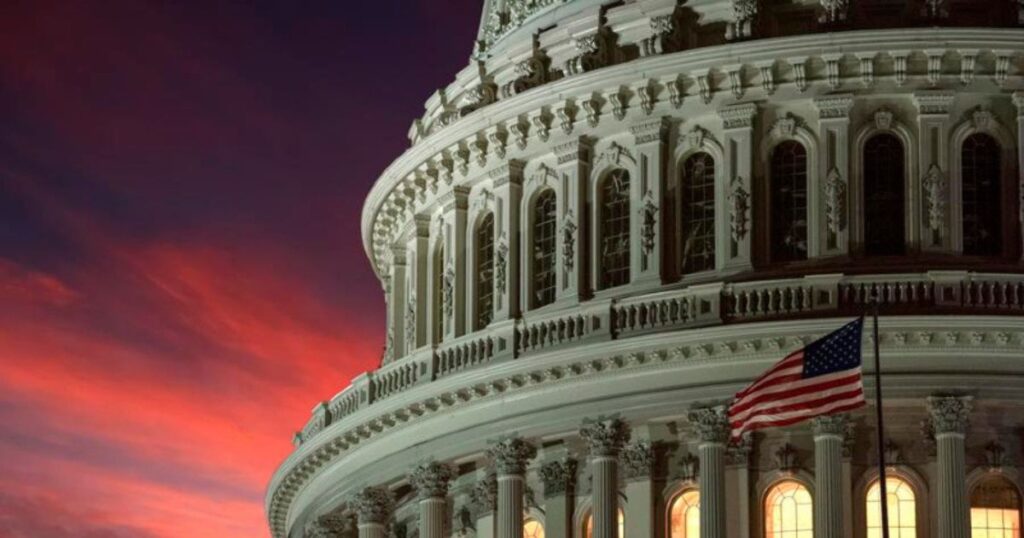How government regulations have created concentration and crushed independence
For decades, Americans have been told that the free market rewards innovation, competition and hard work. That was the promise of capitalism. And for much of our history, it was true. But if we look closely at today’s economy, we see something different. Since 1997, the number of publicly traded companies in the US has fallen from over 8,000 to 4,000. At the same time, the largest 10 companies currently account for more than 30% of the total value of the S&P 500.
We witness more than a natural decline and business flow. We see the rise of systems that look like free market capitalism and look like Oliheads. And here is the unpleasant truth. This was not a coincidence. It happened because of government action – selective regulations that tilt the arena towards the biggest companies while fighting independents.
Government-created Olihead
When people hear “Olihead,” they think of Russian billionaires and shadowy Cabals. However, the American Olihead is being built in the daytime through the choice of regulations made in Washington. Just think about it a little:
1. Rule 10B-18 (1982): Before 1982, repurchases of shares were rare as they risk being treated as illegal operations. Rule 10B-18 created a “safe harbor” and unleashed trillions of buybacks that enrich executives and institutional investors.
2. Sarbanes–Oxley (2002): After the Enron scandal, Washington imposed swept compliance requirements on public companies. Large companies have absorbed costs. Small and medium-sized businesses couldn’t do it. result? Ipos has run out.
3. Dodd– Frank (2010): The aim was to raise Wall Street, which was topped with new burdens from public companies, with private equity being largely escaped and fueled by private capital.
4. Tax Policy: Buybacks received a more favorable tax treatment than dividends, disproportionately benefiting the wealthiest households.
5. Anti-Trust Drift: Regulators eased enforcement and allowed airline, banking, media, technology and healthcare megamegers.
Evidence of Olihead
Look at the results:
– Decrease in choice: Four airlines manage most domestic travel. A small number of banks control the finances. The five tech giants dominate communication, commerce and information.
– Wealth concentration: The top 10% of households own almost 90% of their stock. While independent companies see little profit, buybacks collect cash on them.
– Political Capture: The same companies dominate the market, and spend most on lobbying and campaign contributions. Their influence forms regulations that protect control.
This is not free market capitalism. It’s the OLI head of government response.

Independent businesses narrow down
Among independent companies, there is nowhere where squeezes felt. They do not get sculptures or safe ports. They do not have an army of lobbyists. They cannot manipulate EPS or navigate Salvens with buybacks.
Instead, they play with the rules – and too often, those rules are written to support their biggest competitors. Independent businesses are the backbone of job creation and community vitality. When they are closed, America loses opportunities as well as competition.
Is there a way to go back?
The good news is that Olihead is inevitable. It is created by a policy and can be reversed by a policy. The four steps make a dramatic difference:
1. Rescising Rule 10B-18: End of Buyback Safe Harbor.
2. Public Company Reform Rules: Adjust compliance to the size of the company so that medium-sized companies can make public at an affordable price.
3. Tax Code Level: Equalize handling between dividends and buybacks.
4. Revive Antitrust Enforcement: Stop Rubber Stamp Mega Mega.
If we don’t do anything, the future
If you fail to act, the trajectory is clear.
– Less public companies: Only 2,500-3,000 left, dominated by Megacaps.
– Private Gatekeeper: Growth companies are private and accessible only to wealthy investors.
– Oligopoly Markets: Industries further integrates and reduces consumer choices and opportunities.
– Political retention: Focus deepens political capture.
Its future looks much less and more like a free market democracy, and more entrenched Olihead.
Conclusion: Time to Restore Independence
So, does America have a true Olivia? The answer is yes, but it is not a shadow plot of populist imagination. The actual Olihead was created by government regulations that were separated from independence towards integration of the system.
If you want to restore the American Dream, you must restore independence. It means policies that support productive investment over financial engineering, competition for integration, and opportunities for Olita.
Because the truth is simple. Free people cannot thrive under an oligarch-run economy. If we want capitalism to serve not only minorities but all Americans, it’s time to break the cycle of concentration created by government and return to a system that rewards builders, risk takers and independent business owners.
Steve Beaman is a financial analyst and chairman of the Elevare Club.


